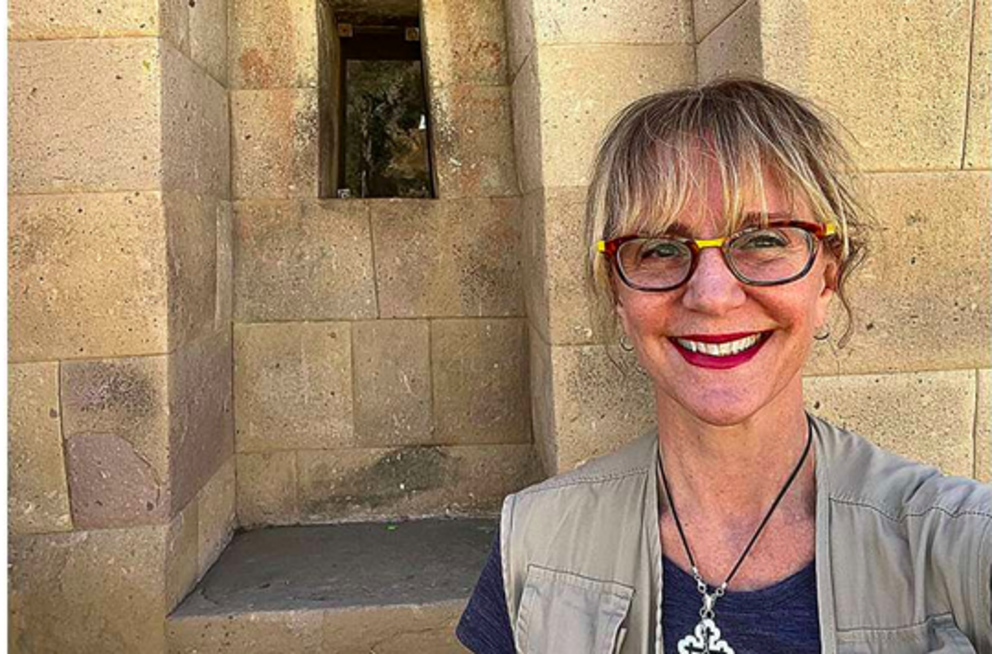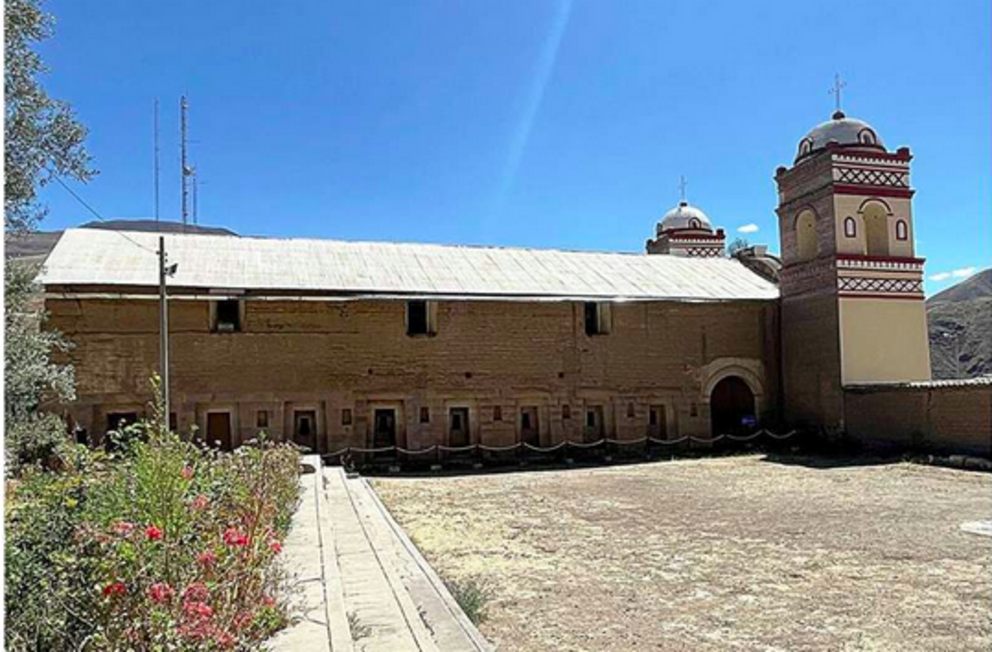A 15th-century Inca building was built for sound—researchers are working to understand why
The Inca empire is renowned for its architecture; its buildings were intricately designed and extraordinarily durable.
But this summer, it was another aspect of Inca construction that captured the attention of Stella Nair, a UCLA associate professor of art history whose expertise is Indigenous arts and architecture of the Americas.
Nair spent three weeks in the remote town of Huaytará, Peru, studying a single Inca building that appears to have been created primarily to amplify sound and music. Known as a carpa uasi, the structure was likely built in the mid-15th century.
"We're learning that sound was incredibly important from the earliest cities on, dating back several thousand years B.C.," said Nair, who is working on her third book about Andean (in and around the Andes mountains) architecture. "Builders were incredibly sophisticated with their aural architecture, and the Incas are one part of this long, sophisticated tradition of sonic engineering."
One of a kind
Nair said the structure is the only known carpa uasi in existence, and although scholars have known about it for many years, the building hasn't been extensively researched—and no previous studies had identified its potential for amplifying sound.
One of its distinctive characteristics is that, because of its intended use, the carpa uasi was built with only three walls, with an opening at one of the gable ends. (The phrase carpa uasi means "tent house," a reference to that open-ended structure.) Nair and her colleagues theorize that the design would have made it possible for sound—such as drums being used to announce the beginning or end of a battle—to be focused toward the building's open end and then out to the surrounding environment.
"Many people look at Inca architecture and are impressed with the stonework, but that's just the tip of the iceberg," Nair said. "They were also concerned with the ephemeral, temporary and impermanent, and sound was one of those things.
 Stella Nair traveled this summer to the remote town of Huaytará, Peru, where she studied an Inca building that appears to have been created primarily to amplify sound. Credit: Stella Nair
Stella Nair traveled this summer to the remote town of Huaytará, Peru, where she studied an Inca building that appears to have been created primarily to amplify sound. Credit: Stella Nair
"Sound was deeply valued and an incredibly important part of Andean and Inca architecture—so much so that the builders allowed some instability in this structure just because of its acoustic potential."
The partially open structure would have made such buildings significantly less stable than most other Inca buildings. Ironically, Nair said, this carpa uasi has survived for centuries because, perhaps at the direction of Spanish settlers, a church was later built on top of it, stabilizing the structure below.
Nair is collaborating on the project with a team of acoustic experts led by Stanford University music professor Jonathan Berger. Nair primarily studied the carpa uasi's architecture, taking measurements and making drawings and photographs. Next, she will use hand drawings and 3D modeling to determine what the roof may have looked like and how the building's overall form influenced its function. Together, the researchers expect to produce a model for how sound would have traveled through and outside the building.
Toward a more complete understanding
"We're exploring the possibility that the carpa uasi may have amplified low-frequency sounds, such as drumming, with minimal reverberation," Nair said. "With this research, for the first time, we'll be able to tell what the Incas valued sonically in this building."
Investigating the sonic properties of a 600-year-old building in the Andes is much more than an academic exercise for Nair and her collaborators—and not only because it is the only surviving example of its kind.
"Sound studies are really critical, because we tend to emphasize the visual in how we understand the world around us, including our past," Nair said. "But that's not how we experience life—all of our senses are critical. So how we understand ourselves and our history changes if you put sound back into the conversation."
Nair said the project reflects the importance of collaboration across disciplines, institutions and borders. The American scholars also benefited from the cooperation of partners in Peru, including the priest who oversees the Church of San Juan Bautista, the building whose architecture incorporates the carpa uasi, and a local archaeologist.
Edited by Gaby Clark, reviewed by Robert Egan

